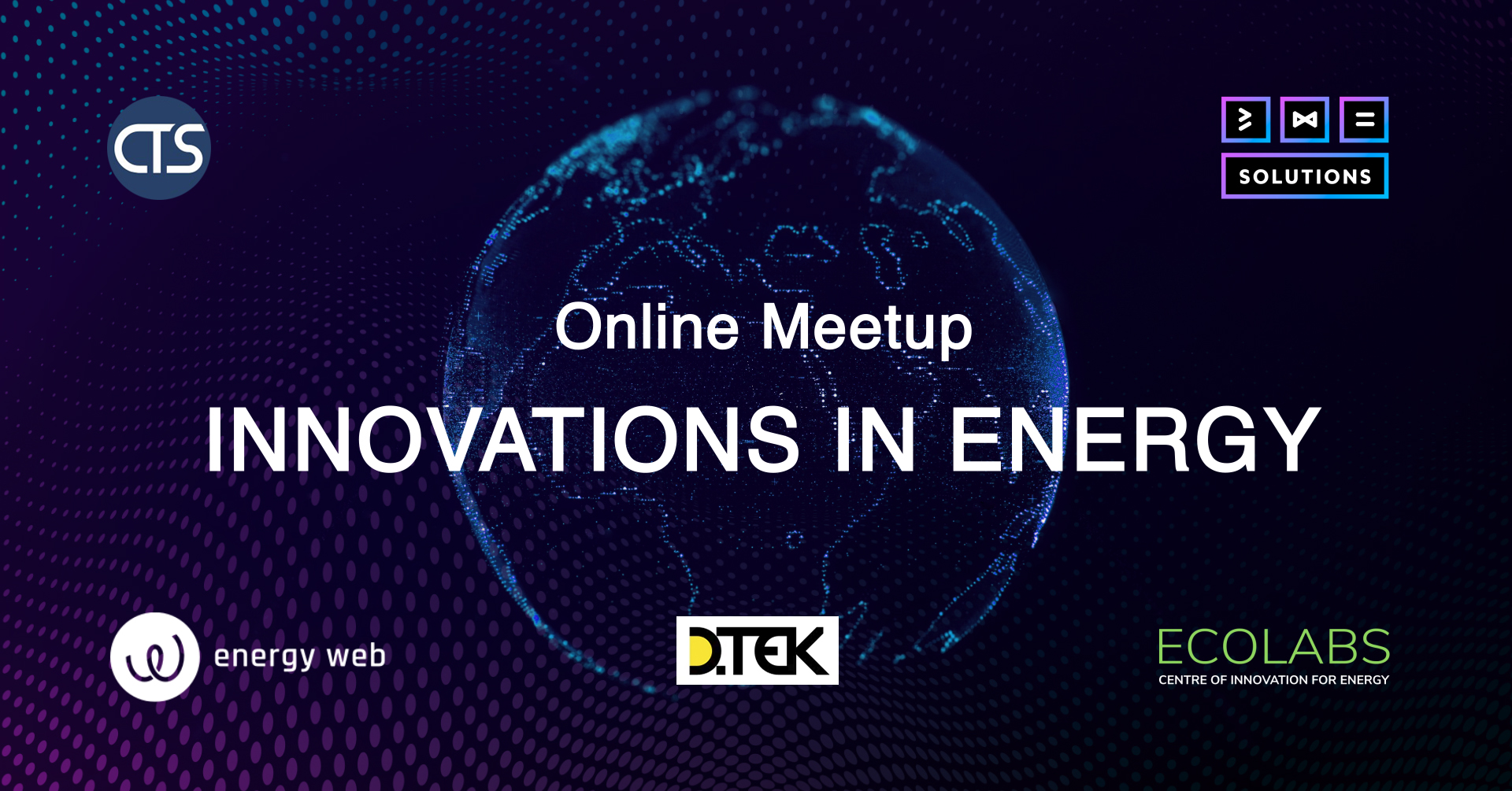
The energy sector is facing unprecedented challenges, with the global Covid-19 pandemic complicating an already challenging transition toward a low-carbon future. One of the key elements in addressing both the current pandemic and climate change is with forward-looking collaborations in technology development and innovation — which have long been a hallmark of 482.solutions approach to problem-solving.
In fact, scientific collaboration among energy domain companies is still increasing, combining traditional knowledge areas.
However, innovation demands the articulation of many layers, including decisions related to environmental concerns and logistics, and the most relevant of all, the competition from other energy areas.
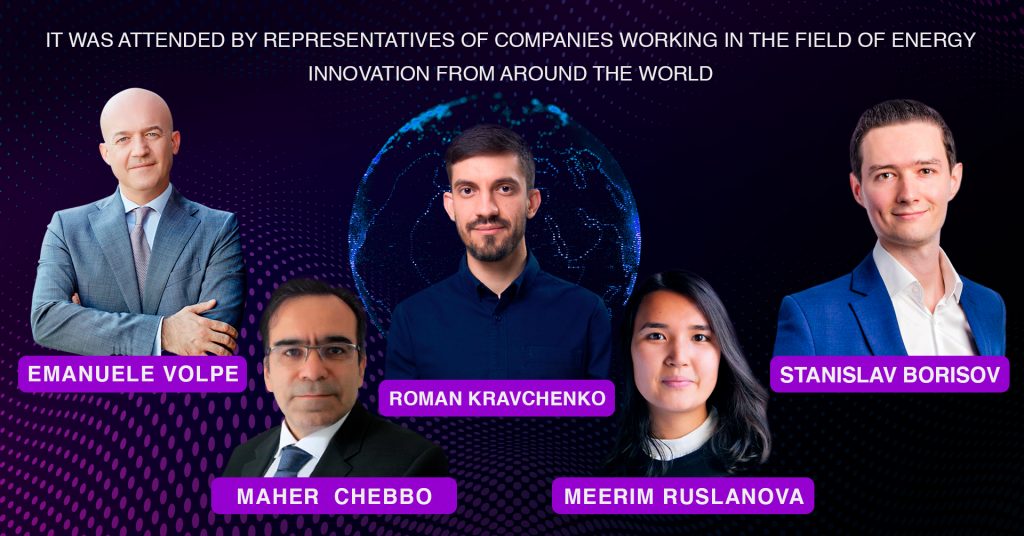
Among the participants were:
- Meerim Ruslanova – Regulatory Analyst, Energy Web Foundation;
- Stanislav Borisov – Innovation Manager at Centre of Innovation for Energy (Singapore);
- Roman Kravchenko – СЕО, 482.solutions;
- Emanuele Volpe – Chief Innovation Officer, DTEK;
- Maher Chebbo – Founder & CEO of CTECHNOLOGYS, supported by GE, focusing on Digital Venture Capital, Board advisory & Digital.

We have collected the main theses from their speeches, which you can find below.

Energy Web Foundation
Speaker: Meerim Ruslanova, Regulatory Analyst, Energy Web Foundation.
Topic: “How decentralized technologies like blockchain support the energy transition”.
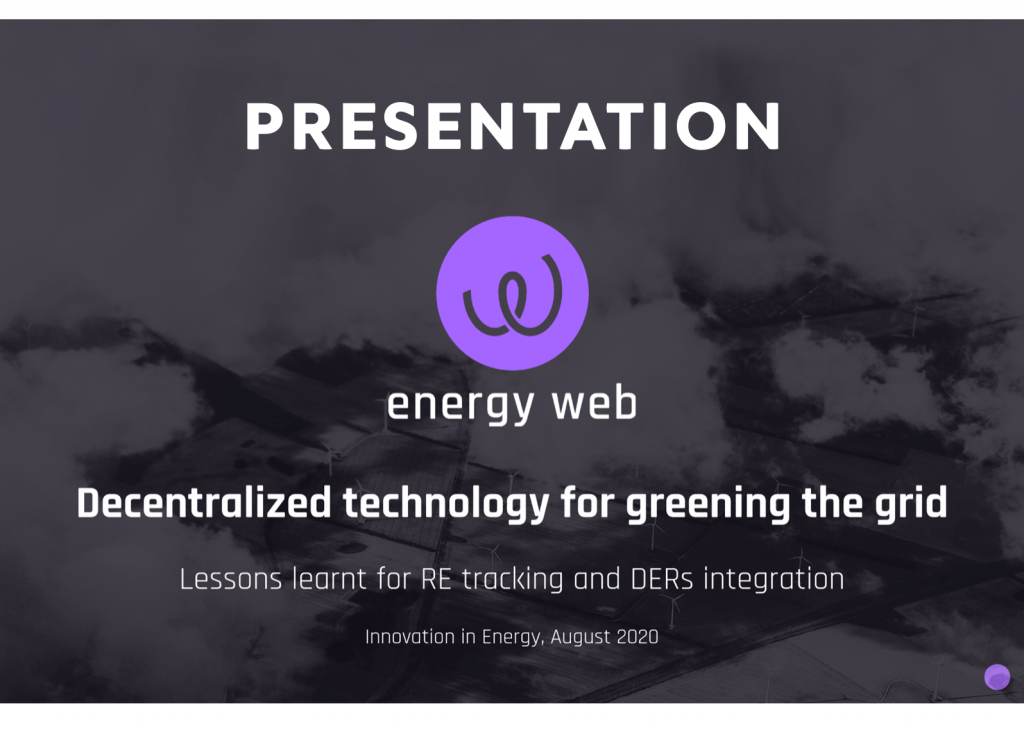
Global nonprofit Energy Web Foundation (EWF) develops public, open-source decentralized technologies purpose-built to accelerate the energy transition.
EW Origin is a tool for building applications for automated, streamlined, cost effective & accurate renewables tracking and trading associated energy attribute certificates (EACs). To-date, EW Origin has been used for building marketplaces for renewable electricity certificate trading. Examples of such new digital platforms include PTT in Thailand and wider ASEAN, PJM EIS in the U.S., Foton in Turkey, AES Tiete and Fohat in Brazil, and Mercados Eléctricos in Central America.
EW Flex is a tool for DER onboarding & market participation, trustless data sharing, and efficient & automated settlement for flexibility services. We completed several pilots on successful battery integration into the grid and prevention of RES curtailment, including with Austrian Power Grid, Sonnen (battery company) and E.DIS (German TSO).

EcoLabs (by Nanyang Technological University)
Speaker: Stanislav Borisov, Innovation Manager, EcoLabs – Centre of Innovation for Energy.
Topic: “Energy Innovation Ecosystem in Singapore”

EcoLabs – Centre of Innovation for Energy enables and accelerates innovation capabilities in Singapore and Asia to support the future energy transition.
This joint initiative with Nanyang Technological University (NTU), Enterprise Singapore and the Sustainable Energy Association of Singapore aims to help local-based energy start-ups and SMEs by providing them with essential translation facilities and connections such as research & development manpower, lab infrastructure, testbed sites and business opportunities to help them successfully commercialize and scale their innovation efforts.
EcoLabs core focus areas:
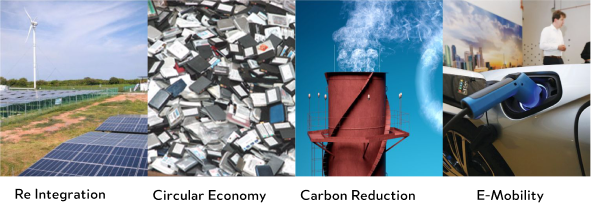
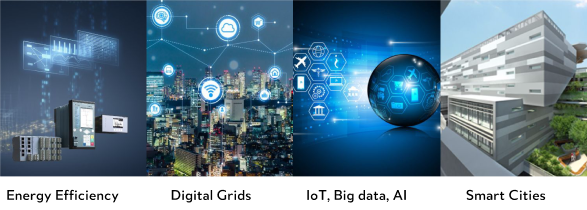
EcoLabs related Technology Translation Testbeds:


482.solutions
Speaker: Roman Kravchenko, CEO 482.solutions.
Topic: Transactive Energy management. From energy to value.
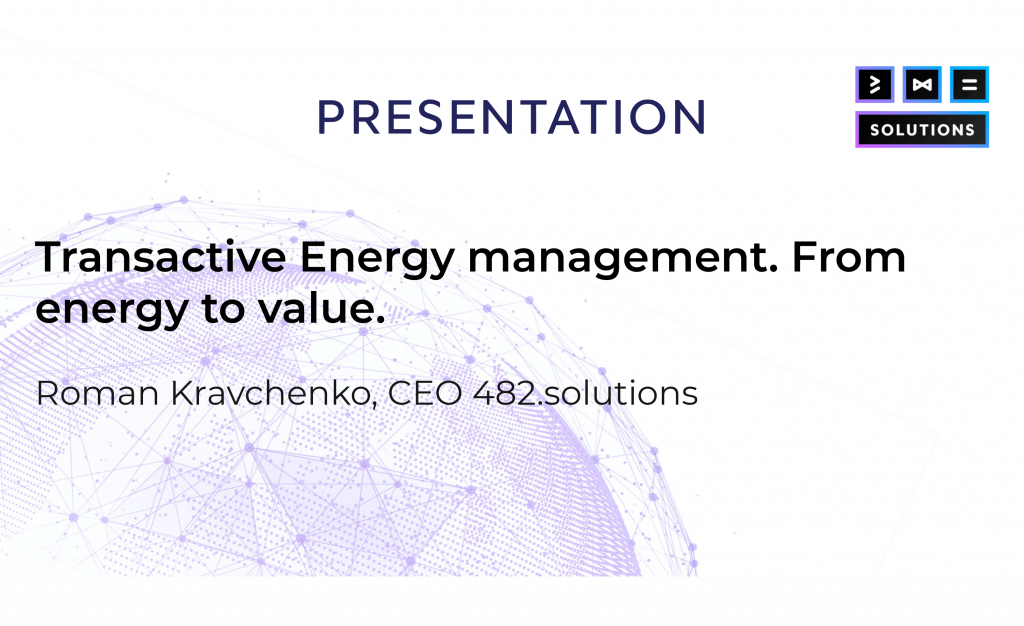
482.solutions is a software engineering provider specializing in innovative solutions using decentralized technologies. The key competency of 482.solutions is creating solutions for Industry 4.0 issues: Blockchain, Future of Energy, Digital Identity, Decentralized Asset Management, Financial Products and Services.
482.solutions drives synergy with energy industry trendsetters: EcoLabs, Energy Research Institute @ NTU, Energy Web Foundation, DTEK, The Ukrainian Electromobility Association.
Transactive energy concept
Transactive energy refers to the economic and control techniques used to manage the flow or exchange of energy within an existing electric power system in regards to economic and market based standard values of energy. Transactive energy promotes a network environment for distributed energy nodes as opposed to the traditional hierarchical grid structure.
- IEEE Standard: P825 – Guide for Interoperability of Transactive Energy Systems with Electric Power Infrastructure (Building the Enabling Network for Distributed Energy Resources).
- IEEE Working Group Transactive Energy_P825 – Meshing Smart Grid Interoperability Standards to Enable Transactive Energy Networks.
New institutional economics theory
The key question: “How can we describe, understand, predict and force Energy industry evolution?”. We can find the answers in New institutional economics (NIE) theory and describes the future of energy in NIE’s categories:
- Market: economic environment.
- Institution: e.g. government, economy, etc.
- Hierarchie: vertical integration, corporation.
- Firm: system of economic relationship managed by entrepreneur.
- Contract: economic agreement, or communication.
- Transaction: atomic operation of agreement, or communication.
- Transaction cost: cost in making any economic communication.
The key NIE’s market entities are transaction and transaction cost. There is the rule that internal transaction costs (inside firms, companies) lower than external transaction costs (at market).
So we can apply Coase’s theorem to describe evolution of energy market.
If four conditions are met:
- Open and competitive market;
- Free access to market information;
- Property rights clearly defined;
- Little to 0 transaction costs,
due to the use of bargaining and negotiation the external transaction costs transform to the internal transaction costs and we achieve efficient outcome regardless of the initial allocation of property rights.
Energy market and electric energy evolution
Currently there are global trends then an open and competitive energy market emerges with free access to market information (condition A and B Coase’s theorem). Due to this energy market evolves:
- Energy Market 1.0 – producer and consumer build economic interactions within mechanism of monopoly contracts;
- Energy Market 2.0 – producer, consumer and prosumer build economic interactions within mechanism of regulated market contracts;
- Energy Market 3.0 (“Coase’s Market”) – producer, consumer and prosumer build economic interactions within mechanisms either of non-regulated market contracts or bargaining and negotiation (P2P economic interactions).
As a consequence, we are seeing electricity (electric energy) evolution:
- “Electricity as a Power”.
- “Electricity as a Commodity” or “Electricity as a Service”.
- “Electricity as a Value”.
DLT (Blockchain) as a transaction FinTech machine for value management
Regarding conditions C (property rights clearly defined), D (little to 0 transaction cost) of Coase’s theorem we might build digital machines and platforms based on DLT (e.g. Blockchain) to meet these conditions with two-layer system:
- decentralized identity management (self sovereign identity) approach that clearly defines the property rights;
- decentralized asset management approach that eliminates the transaction costs.
In this case DLT (e.g. Blockchain) plays the role of FinTech machine (platform) for digitalisation (objectivation, thingification) “value”:
- value harvesting;
- value processing;
- value storage;
- value transmission.
Theoretical foundation of value:
- value as a measure of capitalisation;
- transaction as atomic entity of value
- we can manage value through managing transactions.
Three-tier architecture of value-technology machine:
- Hard (Smart Things): e.g. DERs
- Soft (Internet-of-Things): e.g. SCADA, Virtual power plant
- Intangible (Machine-of-Value): e.g. dApps, Smart-contracts
Energy company evolution:
- Energy company 3.0 – manufacturing enterprise.:
- Business Process Management System;
- Factory automation control system;
- Enterprise Resource Planning.
- Energy company 4.0 – automated manufacturing enterprise (turning energy into value):
- Value Process Management;
- EVP (Enterprise Value Planning) Platform.
- Energy company 5.0 – Financial institution, FinTech company.
3 steps to start managing Value:
- Start collecting the data (telemetry).
- Start using decentralised identity and asset management.
- Elicit, Record and Analyze the transactions (e.g. using DLT, Blockchain).
Electrodo – ecosystem for transactive energy asset management
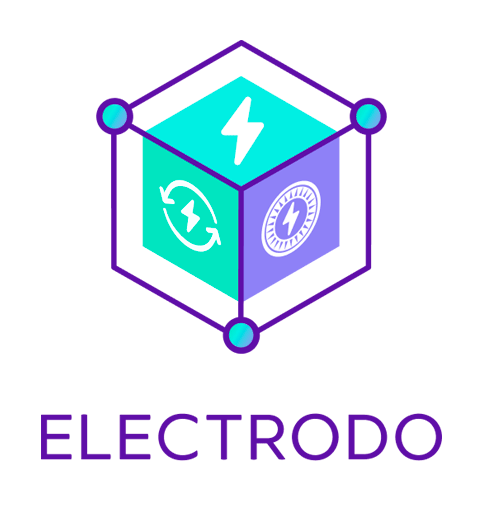
- Platform (permissioned open ledger) for energy value management:
- Energy company asset (infrastructure) management;
- Electricity asset management.
- FinTech platform for shared investing project management.
Transactive Energy Manifesto
- launching joint R&D projects;
- testing innovations using sandboxes and testbeds;
- working on preparation, localisation of industrial and DLT standards;
- involving into regulatory frameworks engineering;
- sharing knowledge and experience.

DTEK
Speaker: Emanuele Volpe, Chief Innovation Officer, DTEK.
Topic: “Open Innovation at DTEK”.

DTEK is a strategic holding company that develops business in the energy sector. DTEK’s companies employ 73 thousand people. DTEK companies produce coal and natural gas, generate electric power at the fossil-fuel fired power plants and renewable energy power plants, supply thermal and electric power to end consumers, and provide energy services.
Rapid development of new technologies, alternative energy markets, energy efficiency and energy-saving technologies as well as decarbonization has driven the world towards a global transformation. DTEK has met the global market challenges with an Innovation DTEK stream and embedded it as its core driving force.
In 2019, one of Innovation DTEK’s main priorities was to scout startups on Ukrainian and global arena with a particular focus on Baltic states, Israel and countries of eastern Europe. It has resulted in 19 successful collaboration agreements with the local and foreign teams. In 2020, Innovation DTEK continues to search for new breakthrough solutions and extends the scope of priorities within 3 Innovation Horizons:
· Horizon 1 – innovative solutions to increase the business efficiency, safety and production environmental friendliness
· Horizon 2 – innovative solutions to adapt to changes in the energy sector
· Horizon 3 – new non-energy business models

500+ STARTUP
on DTEK radar to select pilot projects in 2019
19 PILOT PROJECTS
launched with startups in 2019

Emanuele Volpe, Chief Innovation Officer of DTEK:
The process of innovation must be open. In this area we need to talk not about competition, but rather about collaboration with partners and shared experiences to achieve results.
DTEK Businesses
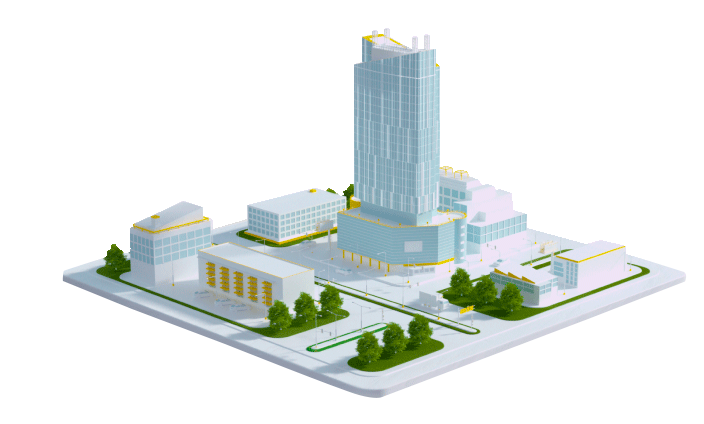
- RENEWABLES
- ELECTRICITY DISTRIBUTION
- THERMAL POWER GENERATION AND MECHANICAL ENGINEERING
- GAS PRODUCTION
- ELECTRICITY TRADING
- ENERGY EFFICIENCY
- EDUCATION AND CONSULTING

Innovation DTEK is focusing on 8 new technologies:
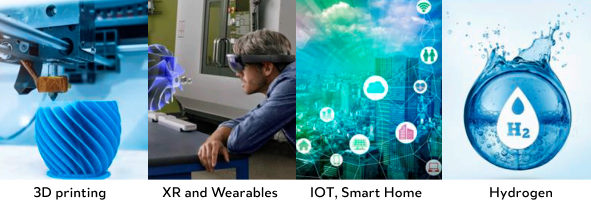

DTEK has become the first company in Ukraine to join the Hydrogen Europe Association. DTEK becomes first in Ukraine to install a 1MW/1.5 MWh industrial energy storage system.

CTECHNOLOGYS (supported by GE)

Maher Chebbo, PhD Energy, Founder & CEO of CTECHNOLOGYS, supported by GE, focusing on Digital Venture Capital, Board advisory & Digital Energy Transition Ventures.
Digitalization as a major innovation to help the energy transition for a decarbonized world. European cities make investments in energy efficiency, carbon neutrality, renewables deployment, transportation and logistics. The whole transportation and logistics probably represents 60 to 70 percent of the emissions. Now they are investing in the energy transition and better climate.
“Today Europe has announced a trillion in terms of public and private investments for a green deal to help prepare until 2050.”
A program of Horizon Europe, which is the funding of Europe for innovation and research and innovation in different sectors of the economy to be 100 billion and 30 to 35 percent of that is dedicated to energy and climate. Distributed energy resources got about 110 billion in 2017 and this is growing fast to 300 close to 380 billion in 2026 and Smart Cities is growing to 135 billion in 2021 according to the IDC report.
Holistic view of energy
The key issue is a holistic view at the future of energy provided in report produced in 2018 by ETIP SNET.
“We should not look at the electricity or gas or heating and so on separately we should look at all of that together as a holistic view so the convergence of view on energy and then also look at the different sources of converting things.”
So all of energy sources and their conversion will be part also of the landscape and the importance of having the data and the digitalization across the whole infrastructure.
Infrastructure management
Today we might focusing on solutions for energy transition infrastructure management across the whole value chain:
- power plant;
- assets of a power plant;
- production of the energy;
- bringing the energy to the transmission and distribution networks;
- managing a whole transmission distribution grid networks;
- end-customers relationship management (selling, contracting, billing, etc.).
Data analysis and prediction
Now we’re moving from reporting to energy system prediction. We need digital platforms to collect data, running data scientist models, simulations, predicting what will happen and preparing the whole infrastructure to avoid bottlenecks.
Digital twin, IIoT, electronic marketplaces and Blockchain
We use the digital twin to get the mirror of what’s happening on the physical assets, physical infrastructure and using the data we could predict what will happen to networks. Through this we can manage the whole energy portfolio and build exchanges between distribution grid companies and retailers using electronic marketplaces.
“All of that has to happen using technologies of AI, machine learning and a growing use of blockchain making sure that we comply with the environment we keep the security of supply and independence of the energy as much as possible vis-à-vis the other exporters of energy.”
4Ds in energy transition
4Ds = 3Ds + 1D:
- decarbonizing the energy – reducing the carbon footprint is getting to the carbon neutrality;
- decentralization – transition from classical linear picture to more decentral generation of clean energy everywhere
- digitalization – managing the system in a more sophisticated way using innovative digital technologies, shifting from a central to a decentralized system to ensure robustness in terms of integrity, cyber security, real-time decisions and overall optimization.
“Digitalization has an incremental value according to the World Economic Forum two trillion dollars”.
In addition to 3Ds we need to add another “D” which is the democratization. If you have a very sophisticated car but it’s not easy to drive then you are losing a lot of the value of that car. If you have a very sophisticated smart system but users cannot use it with simplicity and so on it’s not democratized then you are losing the value of that smart system. So that’s what the democratization means is giving the users a platform, a workplace or a portal access which could be like a one-stop shop, universal access, user-friendly anywhere where they live.
Everything that could transform a passive consumer to a more active user like we see it in telecom where the users of mobile phones are very active and also transform them and their flats into smart flats and to become also prosumers.
Energy Transition and Batteries
Transportation and logistics sector will have to move to more e-mobility and green e-mobility with the touch points between the digitalization and mechanical side. Mechanical side we’ll be looking at really the batteries as a technology in itself. The batteries have to play competitive role and you know help the automotive sector to stay in the leadership particularly in Europe. But we must think about how to optimize the whole value chain of discovery, research and development, production, maintenance, usage and how the cars and their batteries could be used in the system, and the whole end of lifecycle of the batteries.
“…the idea is to define like a digital passport for batteries that have the whole history of the battery from the way it was designed to get out of the factory, how it was used, the carbon footprint behind it.”.
Takeaways how to achieve an accelerated energy transition
- define what are the needs and market trends;
- list the technologies and the use cases with the stage of maturity, feasibility, simplicity and affordability;
- measure the value;
- move from quick experiments, quick pilot to the massive scale up;
- remove the barriers for opening the market;
- make the systems robust in terms of security and privacy as well.
